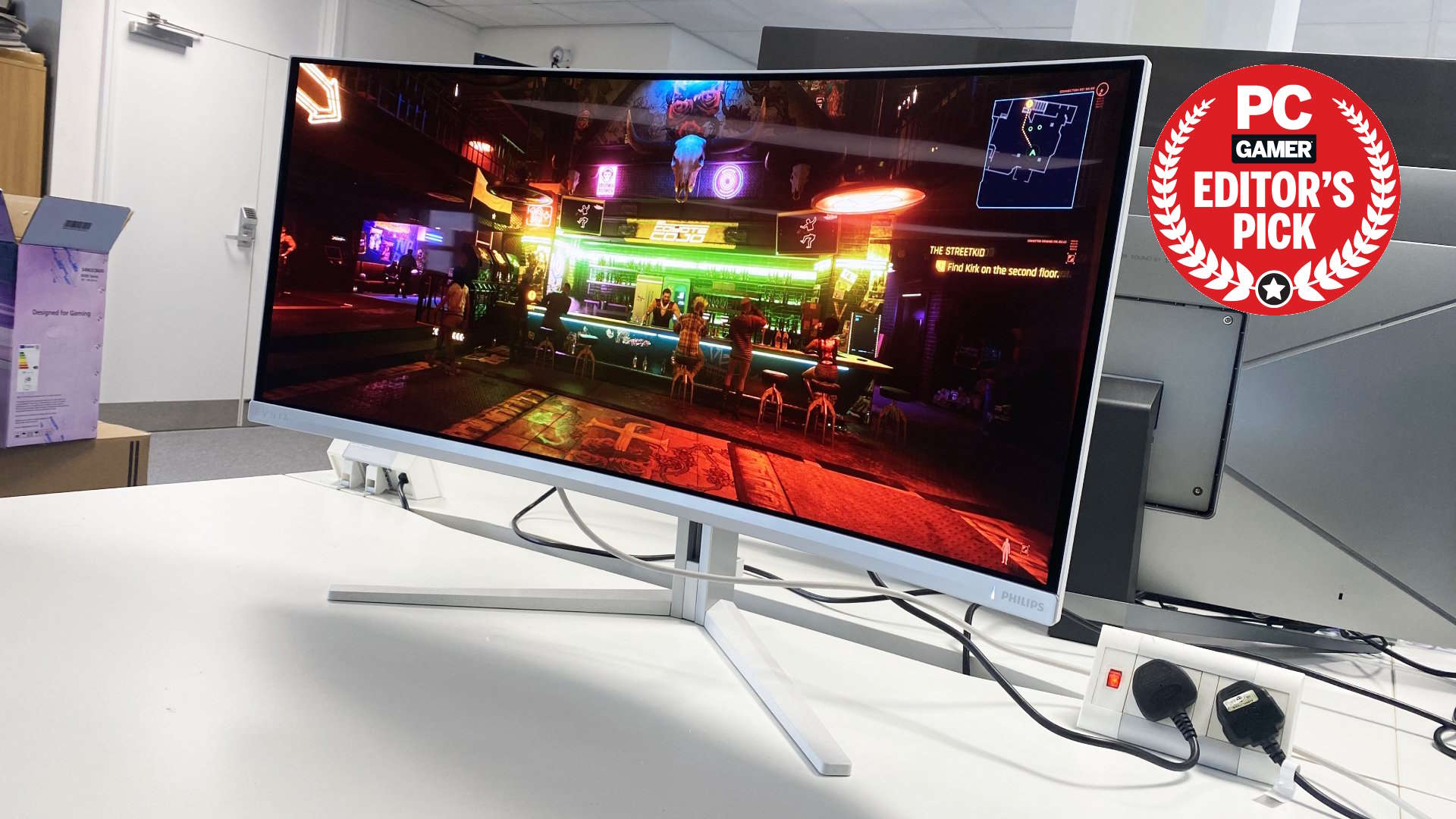Our Verdict
If Alienware's very similar 34-inch model was the OLED monitor we've been waiting for, Philips has just bested it. Thanks to a glossy panel coating, the OLED tech really sings. HDR games? They positively sizzle. A few minor OLED limitations remain. But this is as good as gaming monitors currently get.
For
- Glossy panel lets OLED tech sing
- Super speedy performance
- Fewer OLED downsides than the competition
Against
- Very expensive
- Pixel density is nothing special
- Some brightness limitations remain
PC Gamer's got your back
The new Philips Evnia 34M2C8600 is awesome. It's such a relief to say that. In recent months we've covered several new monitors based on cutting-edge mini-LED and OLED panel tech. But they've all disappointed to some degree, including Philips' own mini-LED monitor the Philips Evnia 34M2C7600MV.
Philips has gone for a glossy coating and it makes all the difference. This thing looks stellar.
Not Philips' new Evnia OLED, though. This thing rocks. By most measures, this new OLED monitor isn't especially novel. It's based on the same Samsung-sourced QD-OLED panel we first saw in Alienware's 34-inch OLED model. You know, the one that went straight to the top of our favourite gaming monitor list.
So, it's a 3440 by 1440 pixel item with that immersive 21:9 aspect ratio and a gentle 1800R curve. Philips claims the same 250 nit full-screen SDR brightness and 1000 nit peak HDR brightness, the latter in a small 3% window. Likewise, both monitors promise 0.1ms response times and are capable of 175Hz refresh.
Both brands even claim precisely the same 99.3% coverage of the DCI-P3 gamut and in each case you get VESA DisplayHDR True Black certification. So, yeah, on paper there's basically nothing to choose between them. In practice? Well, in practice it turns out this new Philips panel has a decisive advantage.
Screen size: 34-inch
Resolution: 3440 x 1440
Brightness: 1,000 nits peak HDR 3% APL, 250 nits full screen SDR
Response time: 0.1ms
Refresh rate: 175Hz
Viewing angle: 178° H&V
Contrast ratio: 1M:1
Features: OLED panel, 99.3% DCI-P3, adaptive sync, 1x DisplayPort 1.4, 2x HDMI 2.0, USB Type-C with 90W PD, USB hub, 1800R curve
Price: $1,200 | £1,150
No, it's not the Philips Ambiglow RGB lighting on the rear of the chassis. That's fun, but doesn't really move the needle materially. Nor is it the absence of an Nvidia G-Sync module. The Philips just has standard VESA-spec adaptive sync, but isn't any cheaper than the Alienware despite that.
The fact that this Philips has USB-C with power delivery, which the Alienware lacks, likewise probably isn't a major factor on what is primarily a gaming display. Though it should be noted you need to use that USB-C interface or the DisplayPort connection to get the full 175Hz refresh.
Funnily enough, the important difference isn't anything hugely high tech. But it does address one of the few drawbacks of the Alienware, namely its matte anti-glare coating, which slightly robs the display of perceived contrast and makes black tones look a tiny bit grey.
Philips has gone for a glossy coating and it makes all the difference. This thing looks stellar. But let's not get ahead of ourselves. The Philips Evnia 34M2C8600 impresses as soon as you turn it on. That's not because it immediately does something stunning.
Instead, it's because it doesn't look immediately broken on the Windows desktop. It just operates normally and without any clunkiness or weirdness. You can't say that for any OLED monitor we've reviewed that's instead based on an LG OLED panel, such as the bendy Corsair Flex. They all have obvious brightness issues and tend to do annoying and distracting things, such as adjusting the overall brightness of the panel automatically if you have the temerity to resize a browser window. It's just so distracting.
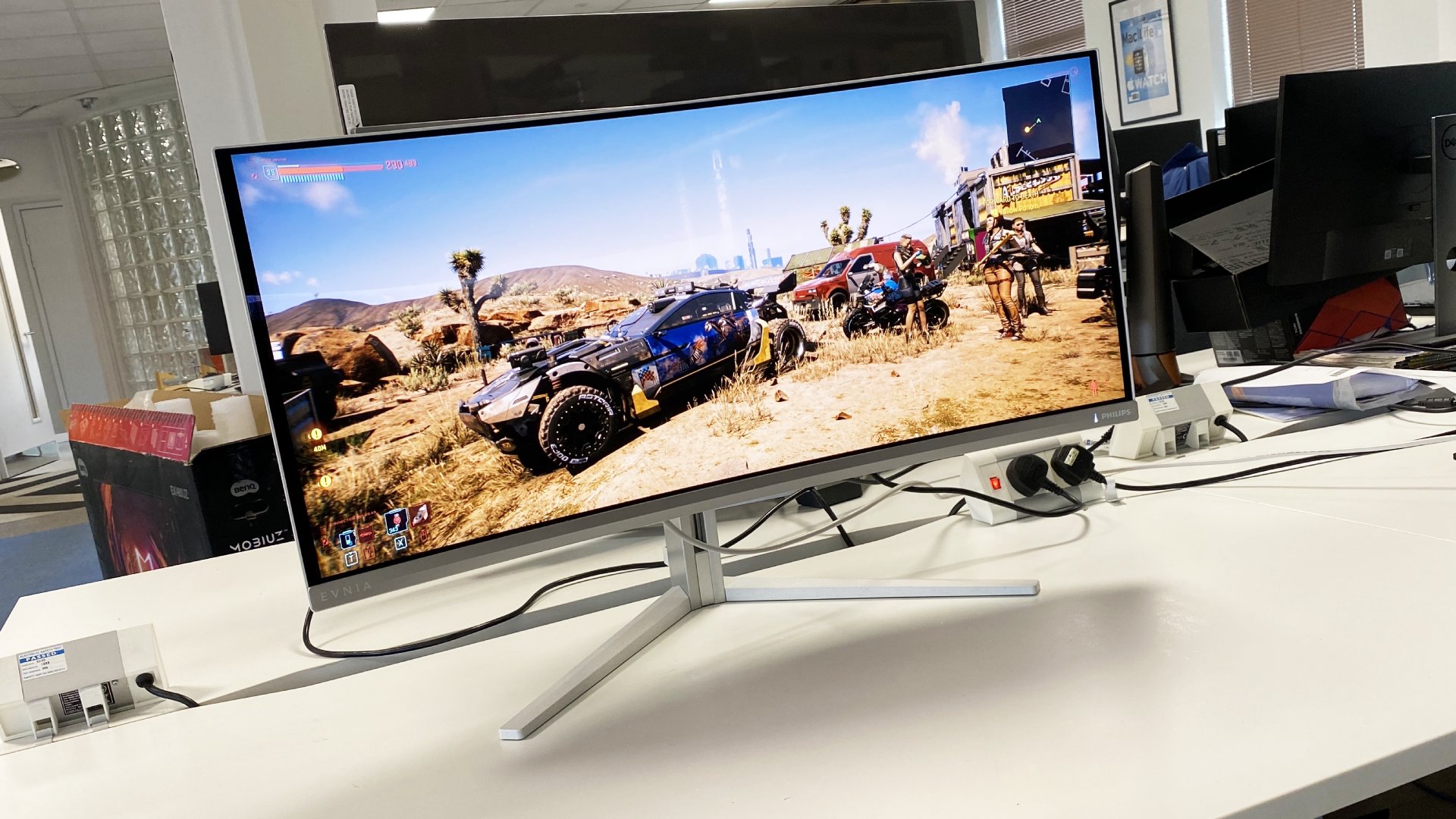
Not so, the new Evnia OLED. Like its Alienware cousin, it doesn't run a problematic ABL or automatic brightness limiter in SDR mode. What's more, it's reasonably punchy at 250 nits for full screen brightness. LG-based OLED monitors come in under 200 nits for full screen brightness and that means they look plain dingy and dull on the Windows desktop.
Yes, mini-LED monitors do basic brightness better. But with that comes all the downsides of LCD, like mediocre pixel response, plus the numerous new issues that come with local dimming, including blooming and crushing of shadow detail. So much depends on exactly how the dimming algorithm has been coded with mini-LED monitors.
Even better, the new Philips is really nicely calibrated in HDR True Black mode. Specifically, the SDR color balance is bang on in that mode. If that sounds like an esoteric concern, it actually matters. Because it means you can run this monitor in HDR True Black mode all the time.
This, surely, is much closer to the way HDR is meant to be.
The slight catch is that there is a visible brightness limiter operating in HDR mode. So, you can see the whole panel adjusting its brightness as you do things like open and close browser tabs or adjust application window sizes. It's fairly apparent in some of the punchier HDR modes, but in our preferred HDR True Black mode it's barely visible, especially compared to the huge shifts in brightness we've seen with monitors running LG panels.
Ultimately, you don't need to constantly switch back and forth between HDR True Black and SDR mode depending on content type. This, surely, is much closer to the way HDR is meant to be. Speaking of this being the way HDR is meant to be, that applies to the actual HDR performance, too. Run some HDR video and, holy moly, the Evnia looks great. The glossy coating really accentuates the contrast between those inky OLED blacks and the sizzling highlights.
Granted, the HDR True Black mode is only calibrated to peak 400 nit brightness. But the perfect black levels mean that that's enough for a really punchy overall feel. Highlights really pop, even limited to 400 nits.
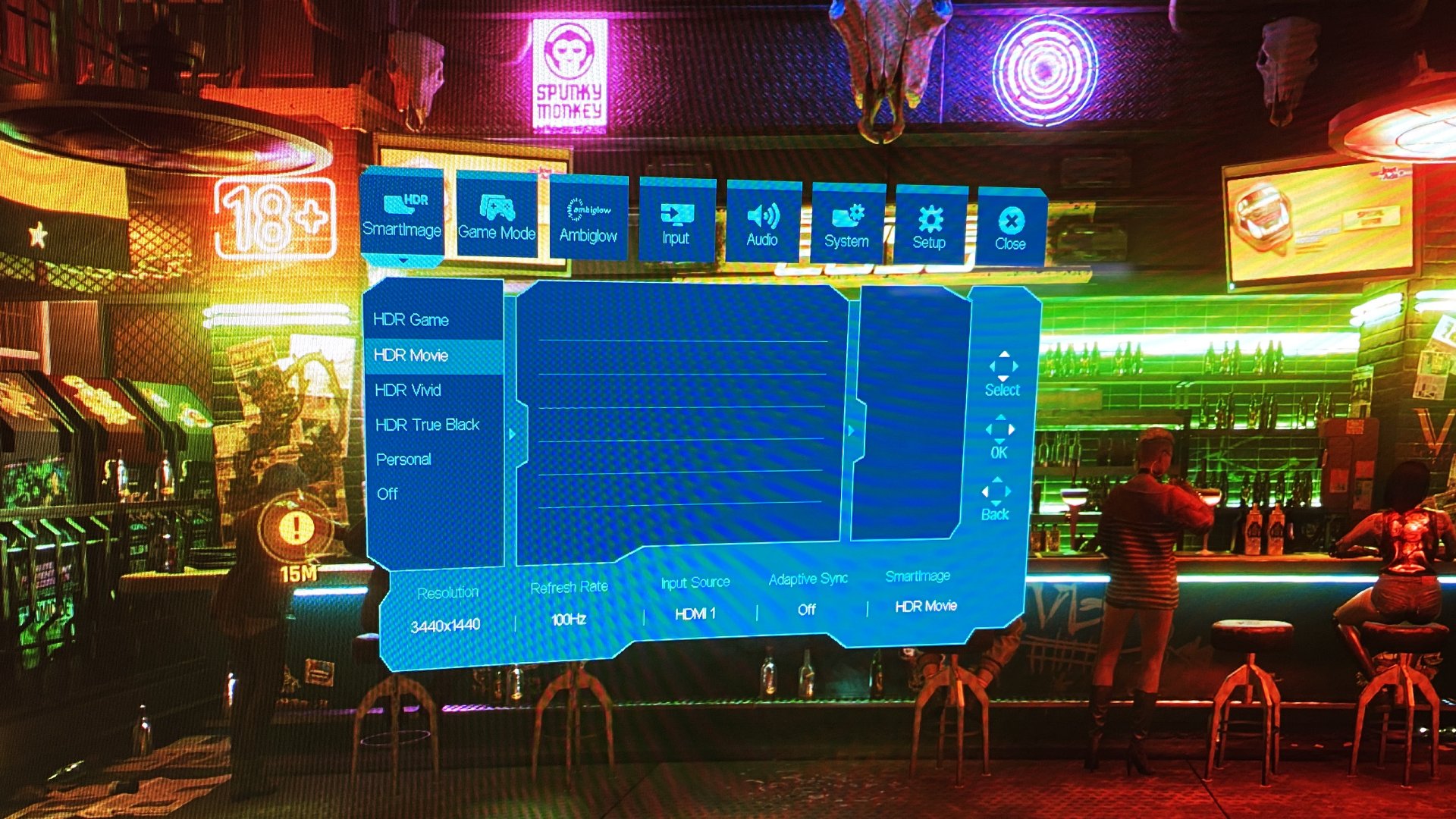
Hop into an HDR-capable game such as Cyberpunk 2077 and with this monitor you actually understand what all the HDR hype has been about. Running Cyberpunk in HDR unambiguously looks better than SDR mode on the Evnia. It's surprising how few HDR monitors you can say that of, even those with ludicrous peak luminance levels.
More to the point, the Evnia absolutely sizzles in Cyberpunk. Outside, there's immense shadow detail at the same time as fabulous pop where shafts of sunlight hit objects or characters. Inside, neon lights really sock it to your retinas. But right next to that you can see details in the darkness that you've never spotted before. It's a bit of a revelation.
In fact, seeing this monitor do its HDR thing is to experience something of an epiphany. Suddenly, HDR makes sense rather frustrates. If there is a catch it's that none of the alternative HDR modes Philips has included quite hit the spot.
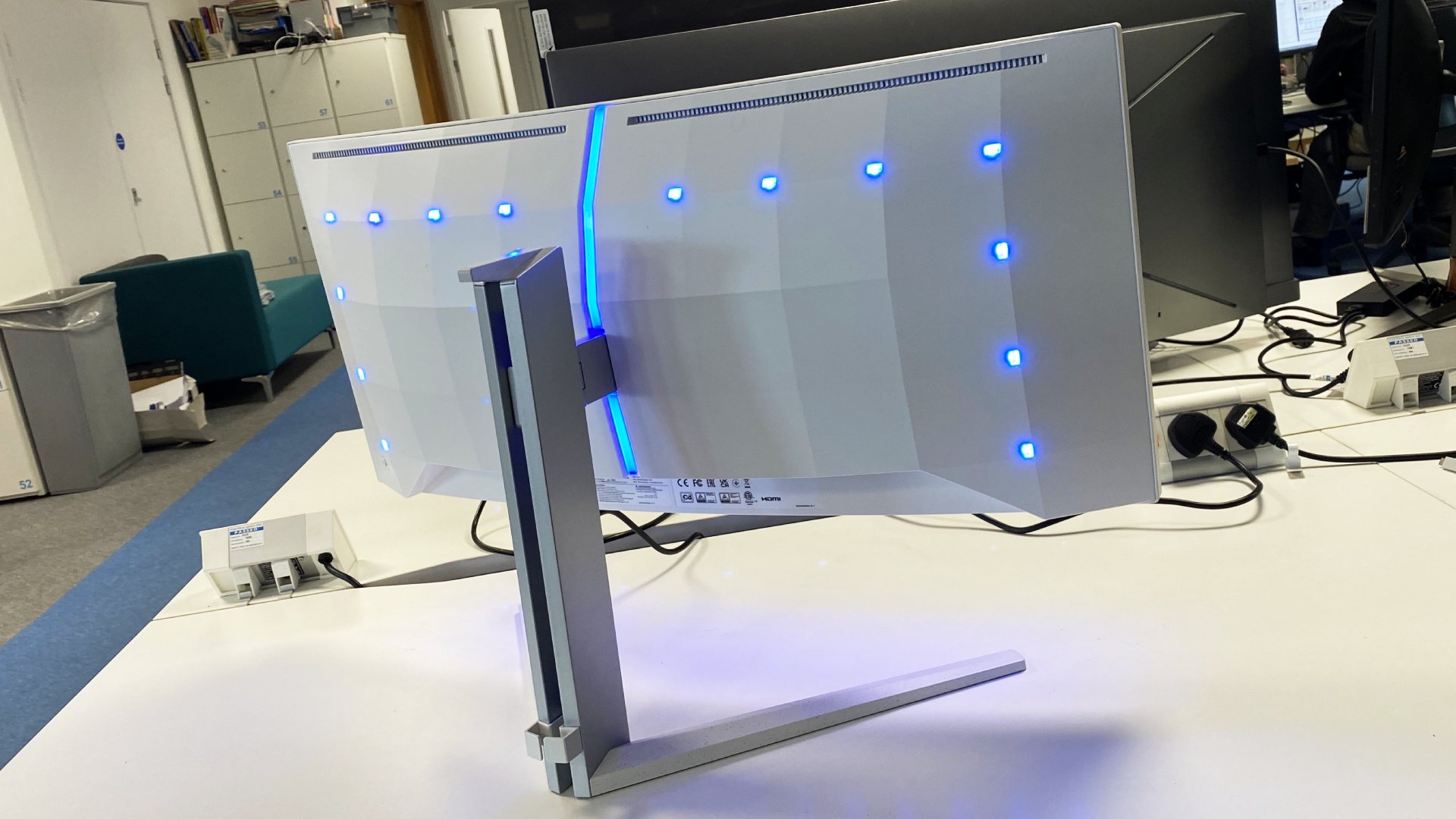
Yes, they allow access to higher HDR brightness levels and thus achieve that 1000 nit claimed peak. Problem is, they're all a little oversatured and imbalanced. If all you care about is pure visual punch, then OK. But the color balance and saturation only looks right in the slightly more restrained HDR True Black mode.
In other words, you can't have the full 1000 nit experience and accurate colors at the same time, which is a tiny bit of a pity. Us? We'd stick with HDR True Black mode. It has plenty of pop, a true HDR experience and natural, convincing colors. It's just great.
Seeing this monitor do its HDR thing is to experience something of an epiphany.
There's more good news elsewhere. The pixel response is, of course, outrageously zippy. It's better than any IPS monitor. Combine that with the 175Hz refresh, which is enough for all but the most lag-sensitive esports addicts, and you have seriously speedy overall experience.
If you're looking for downsides beyond the slight trade offs of the various HDR modes and the marginal remaining brightness limitations, well, there's one obvious issue baked in from the get go. Its pixel density. 3440 by 1440 pixels on a 34-inch ultrawide monitor makes for a pedestrian pixel density of 110DPI.
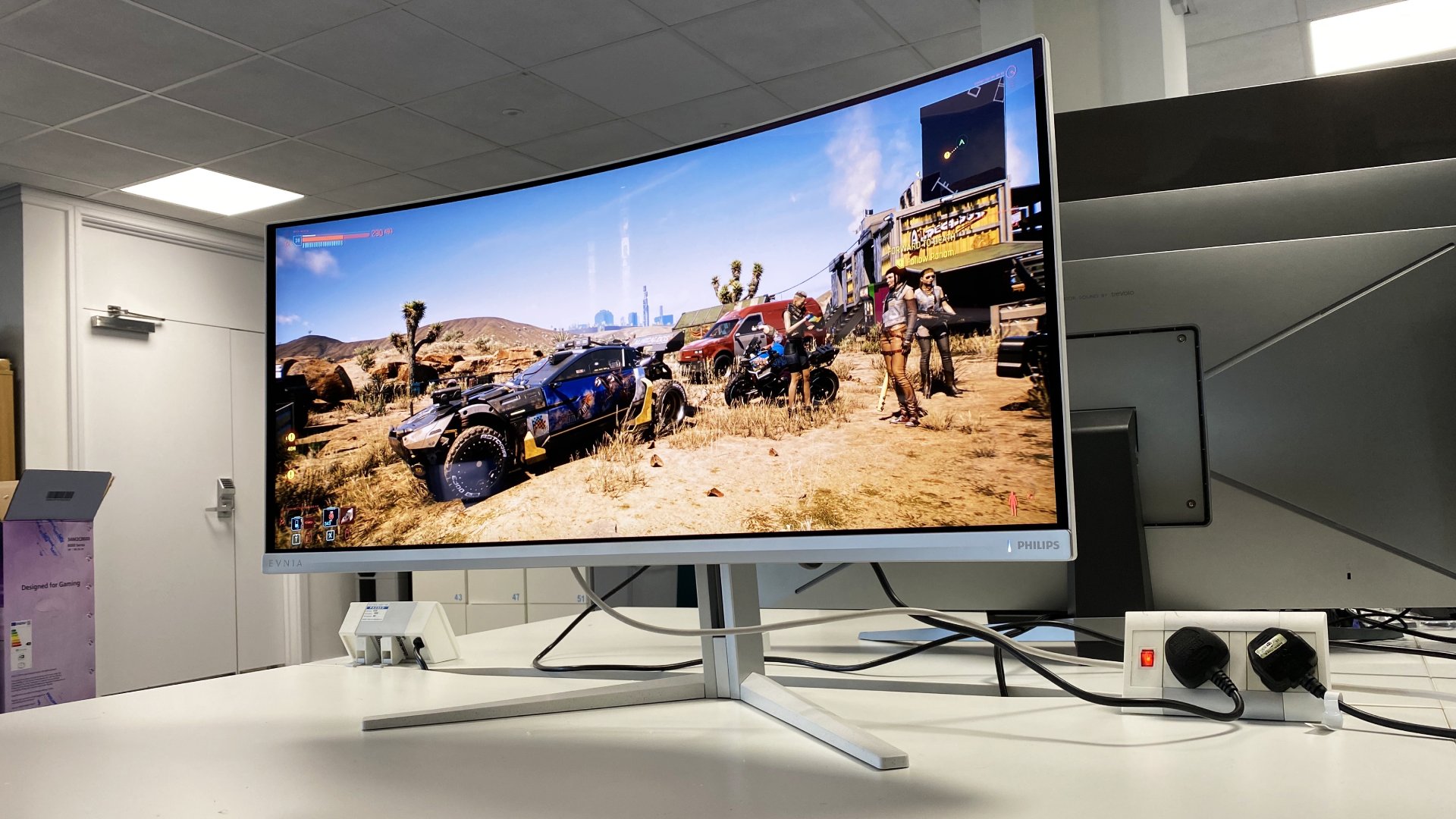
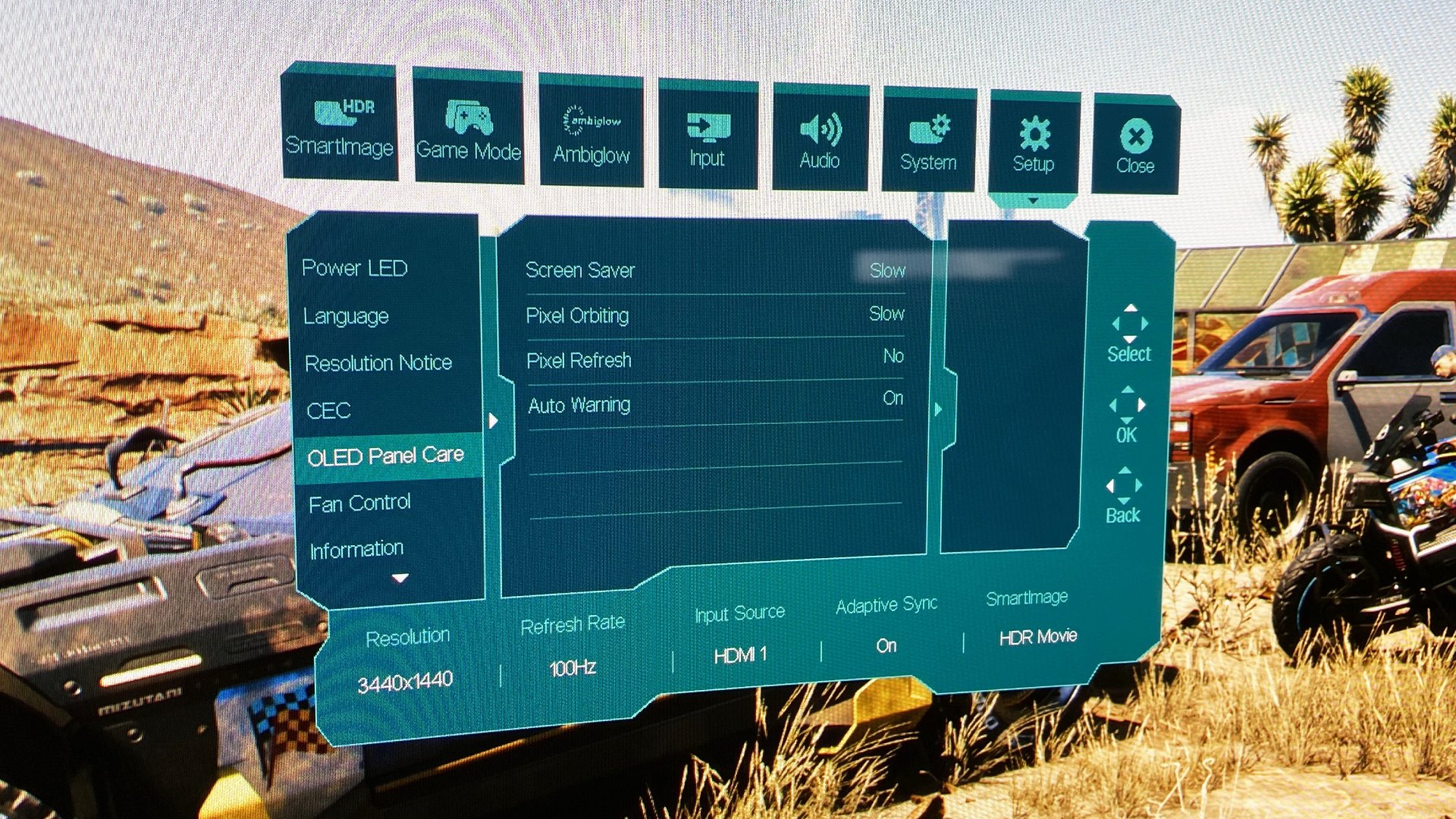
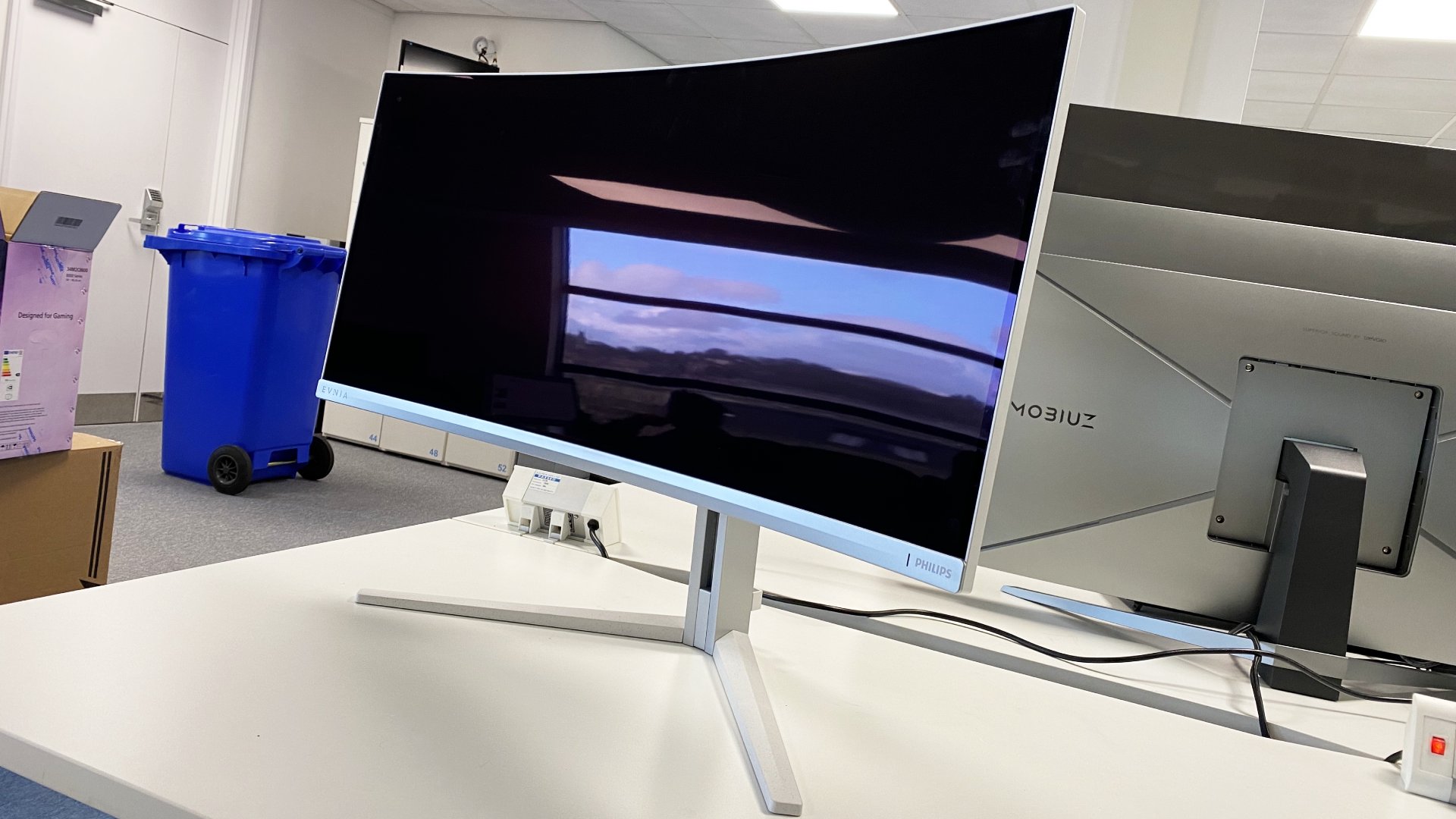
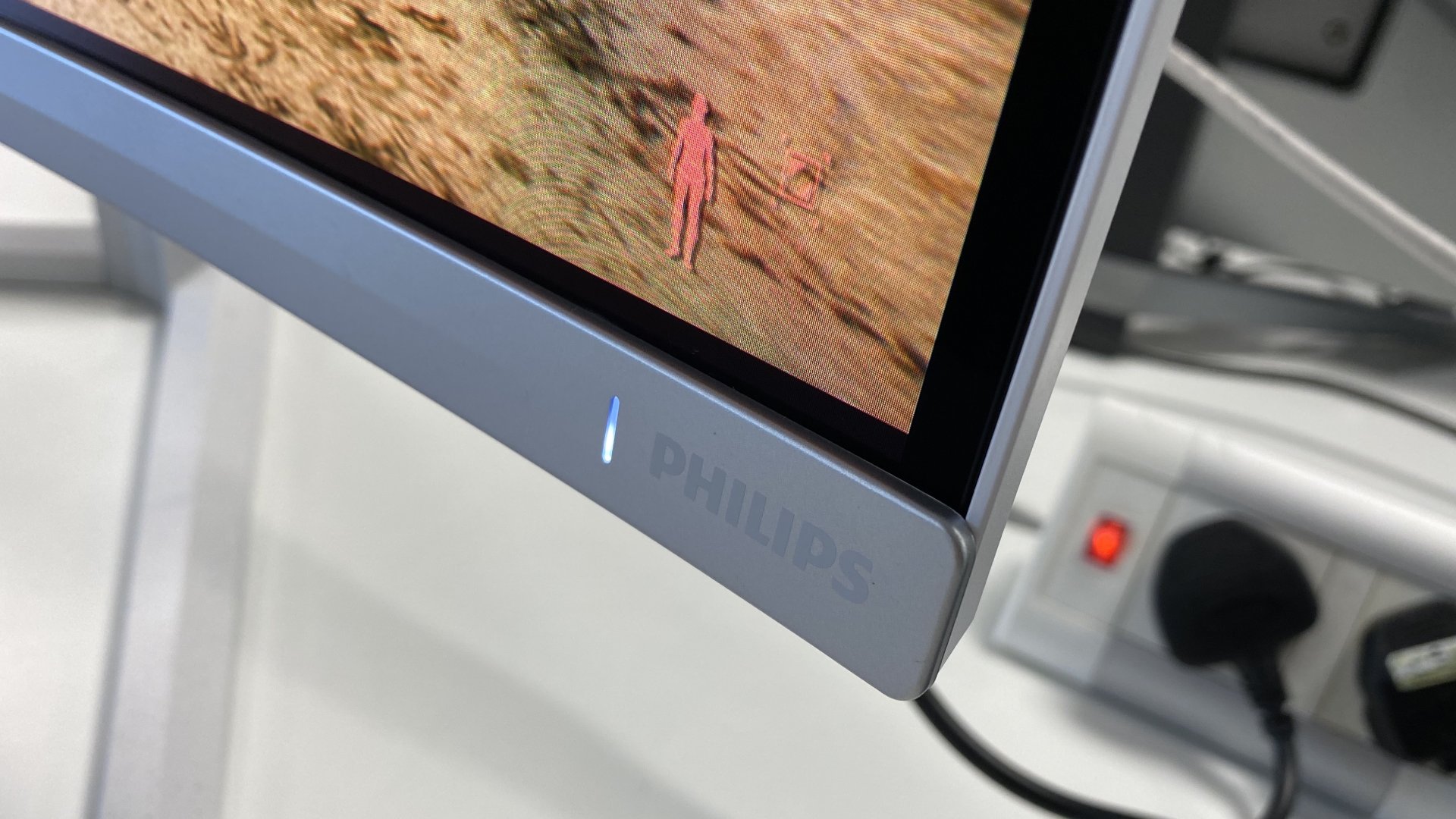
Of course, a higher resolution and higher pixel density would have implications for frame rates. Let's say this was a 5K2K 34-inch panel with 5,120 by 2,160 pixels. That's your pixel density solved right there. But then you'd immediately have a new frame rate issue. Even an Nvidia RTX 4090 is going to struggle to hit triple-digit frame rates in the most demanding games at that kind of resolution.
Anyway, like its Alienware cousin the Philips Evnia OLED does lack the retina-slicing sharpness and graphical detail of, say, a 27-inch 4K monitor. There's no avoiding that. But in a pure gaming context, it's still a great compromise between visual detail and frame rates.
It's more for general computing and productivity that the resolution and pixel density don't quite get the job done, especially given the price point. On that note, the Samsung OLED panel's triangular rather than striped subpixel structure is also slightly suboptimal for rendering fonts.
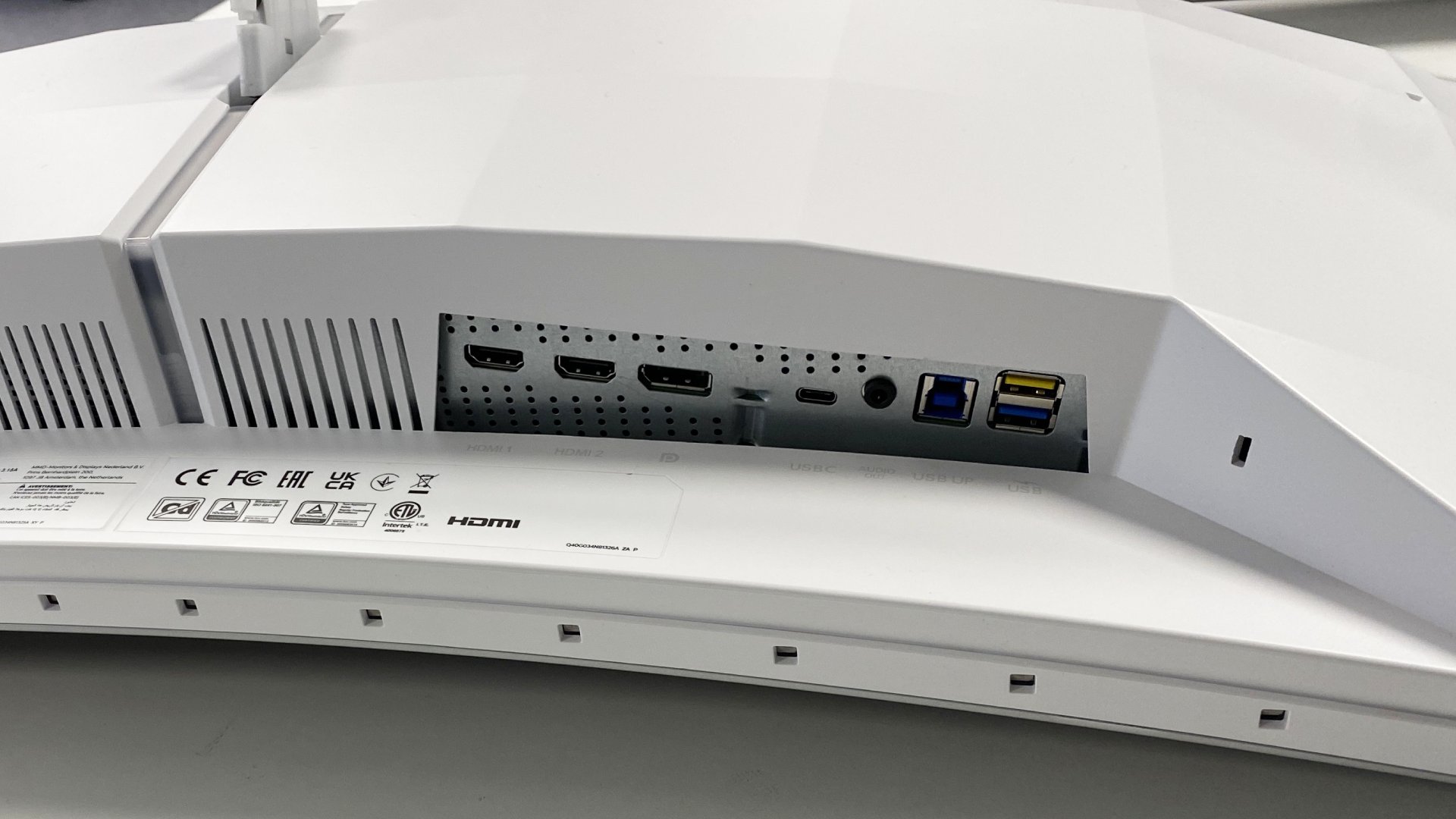
You also have any remaining doubts over OLED longevity. Will this Philips eventually suffer from burn in? That's hard to predict. So far, its Alienware cousin using the same Samsung QD-OLED panel seems to be faring well out in the wild.
All of which means that you may have guessed what's coming. Yup, the Philips Philips Evnia 34M2C8600 is our new favourite gaming monitor. It matches the Alienware OLED at every significant turn, and then adds a glossy coating that really lets that Samsung QD-OLED panel sing.
The Alienware does offer full G-Sync functionality for pretty much the same money. so from an objective scoring perspective, it's a dead heat. But the moral win goes to Philips. This is the OLED monitor—heck, the anything monitor—we would choose.
There's no backlighting weirdness that you have to put up with on mini-LED monitors. Likewise, the full screen brightness is far better than LG-based OLED monitors. Instead, this is the virtually no-compromise OLED experience we've been waiting for. It really is that good.
If Alienware's very similar 34-inch model was the OLED monitor we've been waiting for, Philips has just bested it. Thanks to a glossy panel coating, the OLED tech really sings. HDR games? They positively sizzle. A few minor OLED limitations remain. But this is as good as gaming monitors currently get.

Jeremy has been writing about technology and PCs since the 90nm Netburst era (Google it!) and enjoys nothing more than a serious dissertation on the finer points of monitor input lag and overshoot followed by a forensic examination of advanced lithography. Or maybe he just likes machines that go “ping!” He also has a thing for tennis and cars.
